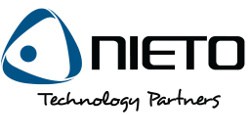Nieto Full-Service MARKETING Division
We all know how critical technology is to a business’s survival and growth. Marketing is also essential because it allows companies to maintain long-lasting and ever-present relationships with their audience. It is not a one-time fix; it is an ongoing strategy that helps businesses flourish. Customer engagement is the heart of any successful business, and we are here to help make that a reality for our clients.
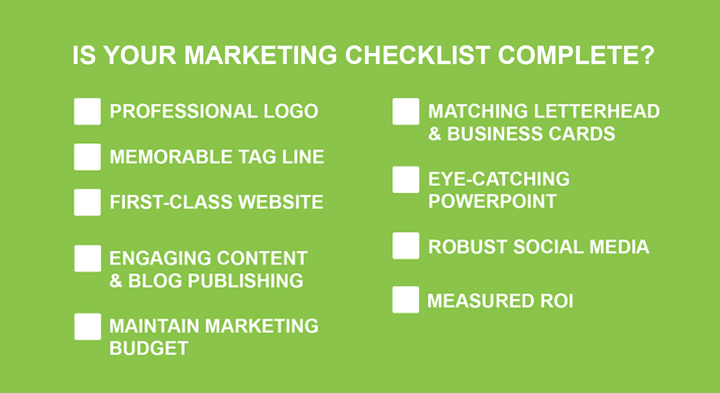
NEW FULL-SERVICE MARKETING AGENCY
Nieto Technology Partners is excited to announce the addition of a full-service MARKETING division to our already stellar lineup of technology and business services. Our core team of creative and technical experts offer branding, strategy and communication know-how for your growing business.
IS YOUR MARKETING CHECKLIST COMPLETE?
| Professional Logo | Matching Letterhead & Business Cards |
Engaging Content & Blog Publishing |
|---|---|---|
| Memorable Tag Line |
Eye-Catching PowerPoint |
Maintain Marketing Budget |
| First-Class Website | Robust Social Media | Measured ROI |
“The most common advice we give new clients is to implement a consistent
and professional use of their brand image across all platforms.”
GET A FREE MARKETING EVALUATION!
Call or Email today to schedule!
marketing@nieto.com | 713-410-9186
It’s HOT! So Is Your Laptop!
It’s the peak of summer, and it’s hot! While keeping yourself cool is a daily challenge, remembering to keep your computer cool is also an important consideration.
The pandemic-powered work-from-anywhere environment has made our laptop computers a constant companion; at home, while traveling, visiting with customers, and even on vacation.
Unlike most desktop computers, a laptop’s hardware components are near each other with little room for air movement. Because they’re prone to overheating, watching for the signs of thermal stress, and protecting the laptop’s fans from blockage, can protect your device against irreparable damage.
Heat can cause decreased battery life, damage to the hard drive, and potentially destroy your screen. Prolonged heat can also reduce the life of the electronic components, ultimately ruining your computer.
4 Tips for Keeping Your Laptop Cool
- Never leave your computer in a hot car. It can protect you from theft and overheating!
- Always allow air to circulate around your laptop. If the fan is making noises, get it checked out.
- Don’t leave (or use) your laptop in the direct sun for prolonged periods. Just like the delicate components of a smartphone, laptops are sensitive to heat from direct sunlight.
- Don’t use your laptop on top of a pillow or blanket (working from sofa or bed). Consider using a lap desk instead. This will provide enough space under the device for air to flow.
If you suspect your laptop has overheated, unplug it, power down, and move it to a cool location. When it has completely cooled, power it up and ensure your data is intact.
Remember, don’t wait until it’s too late to make a backup of your data!
Questions about your laptop? Contact Nieto Technology Partners at 713-893-5667 or email info@nieto.com.
Windows 11 is Here! BUT WAIT…
A lot of buzz is circulating around the new Windows 11 platform launch. With full release planned for the 2021 holiday season, the beta launch last week has created many questions for anxious users.
It has been six years since the initial release of Windows 10, allowing plenty of time for Microsoft to create and cleaner interface that has tons of new features and a Mac-like feel.
Microsoft says it is “redesigned for productivity, creativity, and ease.”
Warning!
Before you rush to install the free Windows 11 upgrade, know that there are fundamental hardware compatibility issues that will prevent you from using some of the features or maybe even installing it at all. For example, when it comes to security, there are issues with the following three items if your computer is more than a couple of years old: 1) Trusted Platform Module (TPM) 2.0, 2) HardwareSecure Boot, and 3) VBS and HVCI Security.
Windows 11 Minimum System Requirements
Processor 1 gigahertz (GHz) or faster with two or more cores on a compatible 64-bit processor or System on a Chip (SoC), *NIETO RECOMMENDS 2 gigahertz (GHz) or faster with four or more cores.
Memory 4 GB RAM, *NIETO RECOMMENDS 8 GB RAM
Storage 64 GB or larger storage device
Firmware UEFI, Secure Boot capable
TPM Trusted Platform Module (TPM) version 2.0
Graphics card DirectX 12 compatible graphics / WDDM 2.x
Display >9” with HD Resolution (720p)
Internet Microsoft account and internet connectivity required for setup for Windows 11
Certain features require specific hardware. See detailed system requirements.
Nieto Technology Partners Best Practices
Before rushing to upgrade, we encourage our clients to wait until it is time for their hardware to be cycled up – approximately every 3-4 years. End-user components are typically designed with a maximum lifespan, so it often makes sense to perform a hardware upgrade. Not only will your new computer be optimized for Windows 11, but it will come pre-loaded with the OS, saving you the headache of installing and configuring on your own.
Want to Learn More About Windows 11?
If you are still considering an upgrade to the Windows 11 operating system or just want to know more about it, you can visit the Microsoft information page for a complete features list along with detailed requirements and frequently asked questions.
To help guide you through the decision process, or to help with installation on your computer or in your organization, call Nieto Technology Partners at 713-893-5667 or email info@nieto.com.
Major Microsoft Security Breach

Dear Nieto Technology Partners Valued Client,
As you may be aware from recent media reports, there has been a cyberattack on Microsoft® Corp.’s email server software. The cyberattack is believed to have infected tens of thousands of businesses, government offices, and schools in the U.S., according to people briefed on the matter. You can read a recent Reuters article about the situation here.
Microsoft has said that it appears that the hackers have been exploiting several flaws in their software to gain access to systems and data, as well as to install software that allows the attackers to maintain a persistent presence in the environment even after patching.
As our valued client, we want to reassure you that Nieto Technology Partners is aware of this situation and we are actively investigating and monitoring our systems. We have fully patched all relevant systems with the emergency patches Microsoft provided on March 2, 2021. We are also in contact with our vendors to ensure they are investigating this situation on their side, as well. So far, we don’t believe our systems have been compromised, but we will continue keep a watchful eye for any anomalies that app ear.
We Want to Make Sure Your Business is Protected
Nieto Technology Partners can conduct an evaluation of your systems and common practices to make sure your environment is safe. Simple steps like being wary of emails or messages from senders you aren’t familiar with, and to never click on links that you don’t recognize or seem out-of-the-ordinary. By staying aware of potential cybersecurity threats, we can all help to prevent fraud before it happens.
If you have any specific questions regarding this cyberattack, please contact us by phone or email to info@nieto.com or (713) 893-5667. You may also visit the Microsoft’s Security site for the latest updates on the attack.
We hope this information has been helpful and as always, thank you for being a Nieto Technology Partners client.
Sincerely,
Luis Nieto
President
Nieto Technology Partners
Steps to Planning IT Budget
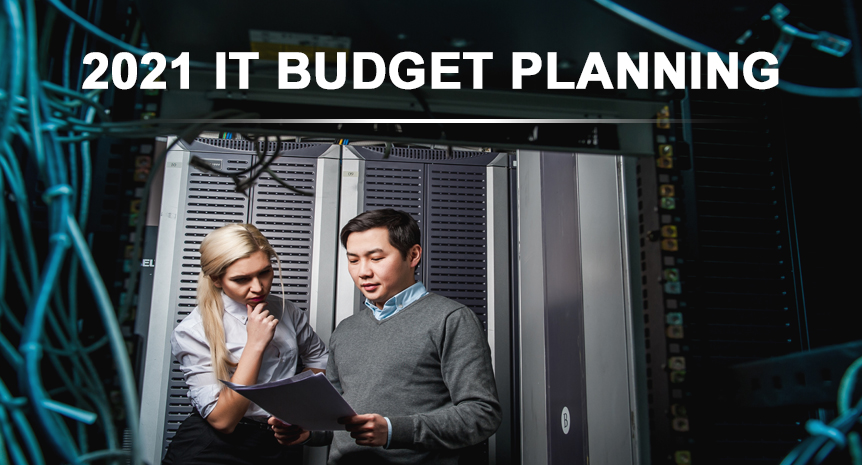
October marks the start of the budget season. But why is budgeting so painful and why do we even need to do it? The answer is simple. While it takes time, budgeting is the number one way to control expenses.
Craig Andreas, Managing Partner at Nieto Technology Partners says “Excluding headcount, IT is often one of the costliest business expenses.”
The problem, of course, is that IT is not a revenue generator by itself; it’s pure expense. This makes it even more important to keep costs under control.
80% of IT managers don’t know what their expenses are. Often, paying bills is left to Accounting – therefore there is no visibility into everyday IT spend.
A case in point: Craig and the team helped a new telecom manager for a multi-million-dollar corporation identify $30,000 in unnecessary expenses within his first month on the job. The reason is that new department managers often don’t know what their predecessor established and inherit expenses for products and services they know nothing about.
“For businesses of all sizes, IT is often reactive rather than planned. This can cost a company more money than necessary in both the short and long term. We’ve seen it time and again.”
To get out of the reactive mode, auditing, planning and budgeting will help technology work for your business, support your growth goals and get your biggest return on your investment.
Steps to Planning Your IT Budget
- Identify Current Costs
Establish a big-picture baseline for what the company’s current spend is. Surprisingly, the smaller the company, the greater the spend on IT – up to 7%.
- Audit
What do you currently pay for and what is really needed? Determine current usage and efficiency, then look for cheaper alternatives or eliminate if no longer needed. Determine if items have reached obsolescence and need replacement.
-
- Subscriptions
- Microsoft Office user accounts and add-ons
- 3rd party web hosting services
- Software seats / renewals
- Identify New Initiatives
Understand your business. What are the corporate goals or business initiatives set by management that require IT involvement?
-
- Office moves or expansion
- New technology
- Online presence or service delivery
- Budget Checklist
- Service
- Desktop support – Plan .5-1 hour per user per month for service
- Network
- Web and application support
- Software Licensing
- OS & applications
- Internet connectivity and WAN
- Backups
- Security
- Hardware
- Desktops / laptops
- Printers
- Servers
- Network
- Telecom
- 3rd Party Vendors
- Support agreements
- Data acquisition
- Service
- Finalize
- Does it make sense against projected revenue?
- Communicate and get approval from management.
- Execute and stay aware of spend and make incremental adjustments as needed.
Ask the Expert – Budget for Small Business
Q: What if I’m a small business and my IT budget it $0?
A: Experts say the single most important thing a small business owner should budget for is “business continuity”. “If you don’t have backups, your computer goes down or your security is compromised, your small business could be crippled, causing loss of business, customers or even your livelihood.”
Nieto Technology Partners has experts in IT Auditing and Budgeting. Call today to schedule a consultation to learn more.
Tropical Depression Tech Alert
Tech Alert! Tropical Depression 14 Forecast to Impact Texas/Louisiana Coast
TD14 is expected to turn into a tropical storm (wind speeds 39-73 MPH) or a Category 1 hurricane (wind speed 74+ MPH) making landfall somewhere along the Texas/Louisiana coast by early next week.
A key component of our Disaster Recovery Plan is reliable, safe and up-to-date backups. If your backups are managed by Nieto, we want to provide assurance that every step has been taken to make sure your data is protected.
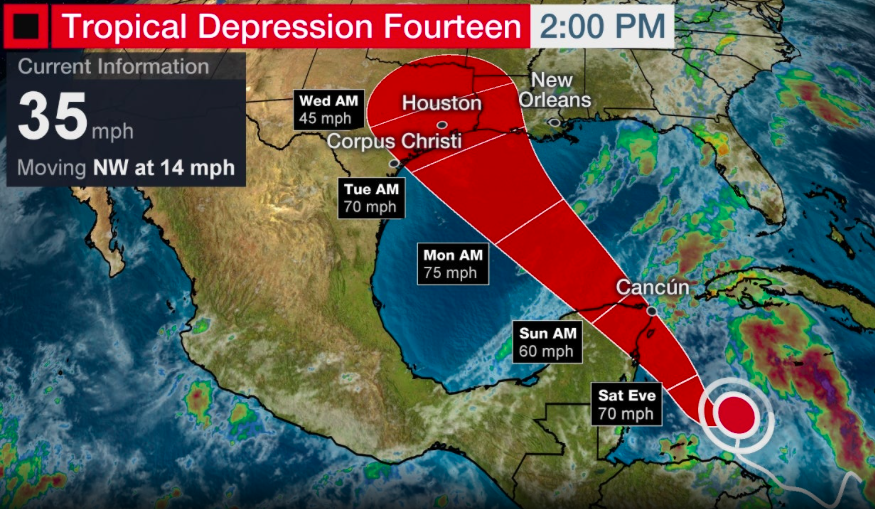
Not Ready for Hurricane Season?
If you have concerns, contact our office today. Our technicians are on-call 24×7 and are here to help. Call 713.893.5667
Is Your Office Technology Prepared for Hurricane Season?
Now that many businesses are re-opening or returning to the office, there is yet another potential disaster lurking on the horizon: Hurricane Season.
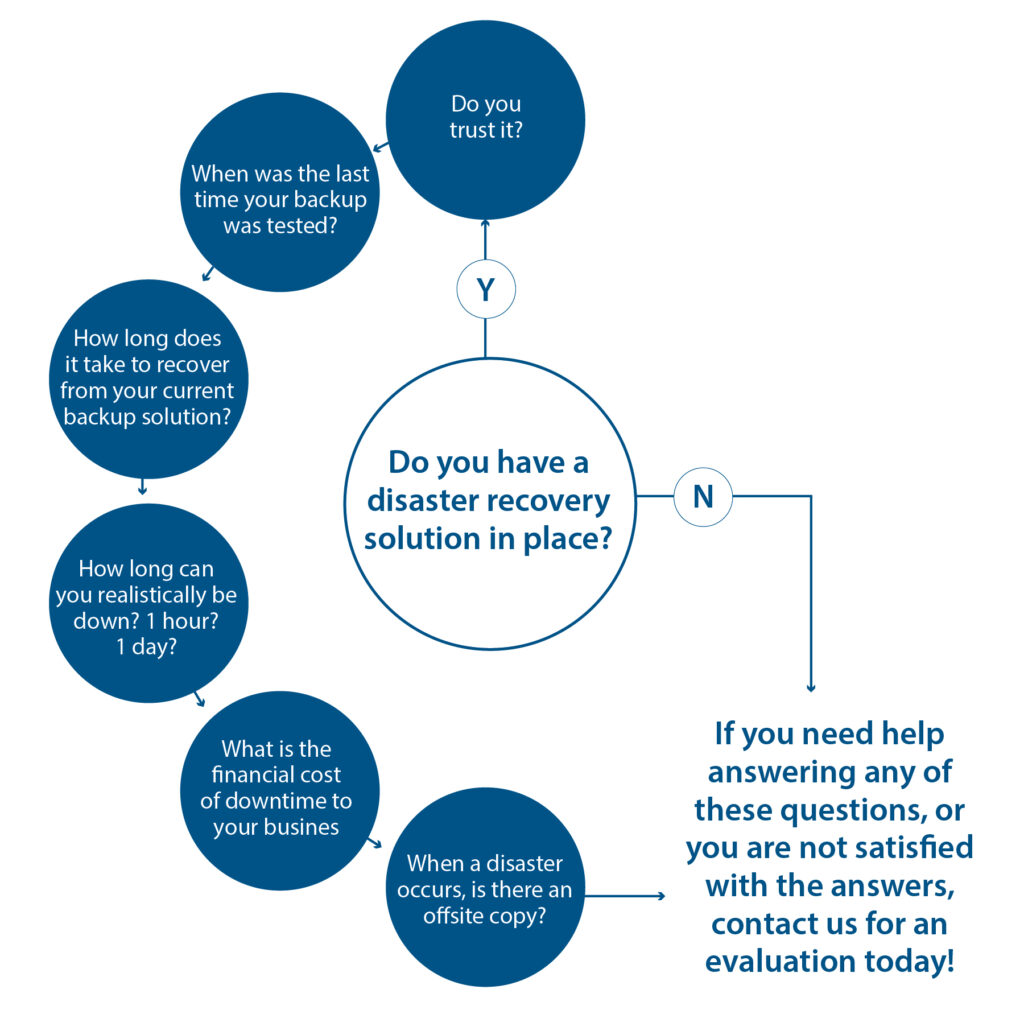
“As Americans focus their attention on a safe and healthy reopening of our country, it remains critically important that we also remember to make the necessary preparations for the upcoming hurricane season,” said Secretary of Commerce Wilbur Ross.
NOAA’s Climate Prediction Center is forecasting a likely range of 13 to 19 Atlantic named storms (winds of 39 mph or higher), of which 6 to 10 could become hurricanes (winds of 74 mph or higher), including 3 to 6 major hurricanes (category 3, 4 or 5; with winds of 111 mph or higher)
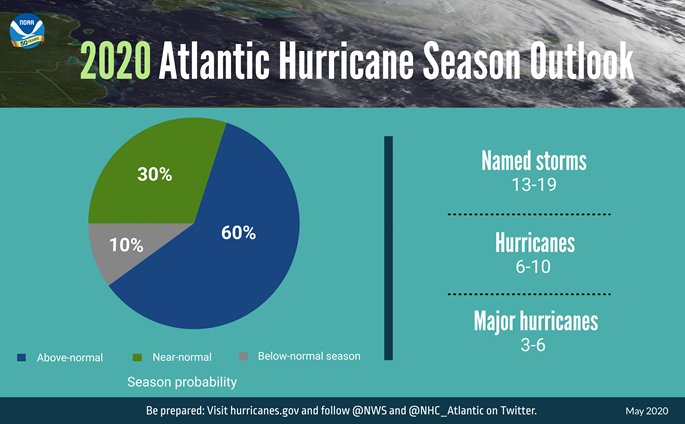
Prior to a disaster, ask yourself the following:
- Do you have a disaster recovery solution in place?
- Do you trust it?
- When was the last time your backup was tested?
- How long does it take to recover from your current backup solution?
- How long can you realistically be down? 1 hour? 1 day?
- What is the financial cost of downtime to your business?
- When a disaster occurs, is there an offsite copy?
Not Ready for Hurricane Season?
If you need help answering any of these questions, or you are not satisfied with the answers, contact Nieto Technology for an evaluation today! 713.893.5667
Is Your Password One of BILLIONS Now Up for Sale on the Dark Web?
Usernames and passwords for everything from network administrator accounts and banking information to video streaming services are being bought and sold every day.
Cybersecurity researchers at Digital Shadows, a digital risk protection company, estimate that over 15 billion stolen account credentials are available on the dark web – some circulating for free! “Many breached accounts are shared multiple times – suggesting that despite being hacked, the user remains unaware of what has happened.”
How Much is Your Account Worth to Criminals?
Prices range from free to over $100,000 depending on value.
Corporate Attacks: Administrative account information for a corporation can sell for as much as $120,000. If attackers are use that access to disrupt an entire network with a ransomware attack (ransomware is a type of malicious software designed to block access to a computer system until a sum of money is paid) and demand millions of dollars in exchange for returning access, the criminals might consider the cost worth it.
Personal Attacks: Obviously, bank accounts are a prime target for cybercriminals. While a compromised account might worth everything to you, a cyber criminal only has to pay an average of $70.71 to get your data. Other accounts like streaming services, social media, data subscriptions and oddly enough, anti-virus software, range in price from free to around $20.
How Do You Protect Yourself?
The what-ifs are scary. Losing your savings, privacy, business holdings and sense of security are realities, but there are steps to protect yourself and your organization.
- Unique password that is made up of random letters (upper/lower), symbols and numbers.
- Utilize different passwords for different accounts. This is made easier by password manager tools.
- Change passwords regularly. There’s a chance your data is already on the dark web. If you are concerned, change your passwords.
- Apply multi-factor authentication for an extra layer of protection, because even if the password is breached, there’s an alert that informs you that someone tried to get into your account.
- Never send passwords or account information via email. Text or call instead.
Office 365 users,
- check for forwarding to ensure emails are not being set outside your organization or intended recipient
- Turn off Outlook web access if not a necessity
- Monthly review of all user accounts, remove any old or incorrect accounts
- Review IP location report to reveal any login attempts from unknown locations/countries
Weak Passwords are the #1 reason accounts get hacked.
- A dictionary word with some letters simply replaced by numbers (e.g., a1rplan3 or aer0plan0).
- A repeated character or a series of characters (e.g., AAAAA or 12345).
- A keyboard series of characters (e.g., qwerty or poiuy).
Not sure if you are protected?
Nieto Technology can help make sure your accounts are secure. Call today to schedule a review of your account security. 713.893.5667
Safe Return To The Office
Create a “Return to the Office” taskforce.
Depending on the size of your organization, consider appointing someone, or an entire team, to lead the efforts of assessing and optimizing the office for return.
Over-communicate to your staff.
Make sure they understand the precautions you have taken, and assure them they can return to the office safely.
Create a “Return to the Office” schedule.
Your goal is to manage how many people are simultaneously in the office. Consider developing a schedule based on employees’ needs, abilities, and desire to be in the office.
Establish an ongoing “Work From Home” policy.
This will help to ensure your office isn’t overly crowded and will help employees who still need to be at home feel comfortable doing so.
Review and update your policies.
Look at sick leave, vacation time, travel policies, etc., and determine if you should make any changes or updates based on the COVID-19 global crisis.
Encourage good hygiene practices in the office.
Practices include frequent hand washing, use of hand sanitizers, eliminating high-touch areas, and wiping down work spaces.
Remind employees to stay home if they feel ill.
Make sure to stress that if they, or someone they have come in contact with, exhibits any known COVID-19 symptoms they should not come to the office.
Check with officials about screening guidelines.
Reach out to your legal advisor and local health authorities for guidance before deploying any health screening procedures, such as temperature checks, etc.
Establish an open line of communication with staff.
Create a cadenced stream of communication with your employees and ensure they understand the channels available to them should they have questions or concerns.
Download Printable Flyer
Prepare for COVID-19 Scams
Businesses across the U.S. should be on high alert and prepare for COVID-19 scams as fraud increases across phone and online sites.
People are concerned and looking to protect themselves, their families, and their employees. But the risk is not just getting sick. In addition to health concerns, there is an increased danger of being victimized by fraud. Knowing how to prepare for COVID-19 scams is key!
Weekly Call Traffic Volume Breakdown
(In Comparison to Pre-COVID-19 Levels)
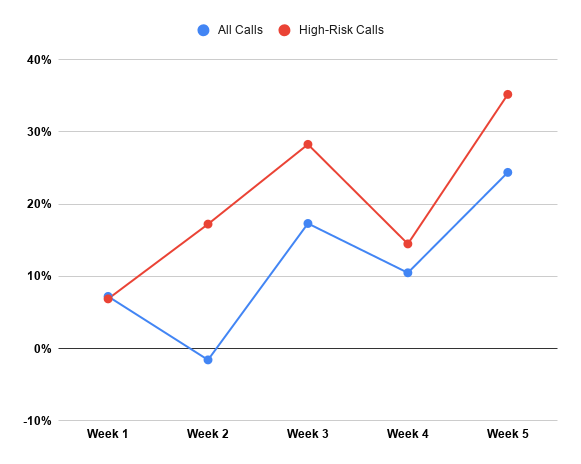
Week 1: March 16-23 | Week 2: March 24-30 | Week 3: March 31- April 6
Next Caller, a New York-based call verification company says that there has been a 30% increase in high-risk calls on average, and a staggering 41% increase for financial institutions.
Like the stealthy transmission of COVID-19, you might not even know that you’ve been scammed. While the phishing process uses familiar tactics to dupe people, the COVID-19 pandemic means that fraudsters can deploy techniques to gain the trust of unsuspecting or distraught individuals.
These new schemes use phony websites, mobile apps, emails, phone calls, and mail pretending to be official communication from healthcare providers, insurance companies, financial institutions, religious groups, delivery services, and government agencies.
Once an individual takes the bait by opening a link or creating a login on a website, the fraudster can use the compromised information to advance the scheme elsewhere.
Next Caller CEO Ian Roncoroni said: “Contact centers don’t stand a chance when criminals can successfully pose as customers. It’s the perfect storm for fraud.”
How to Protect Yourself and Your Business from Covid-19 Scams.
Be wary of any new emails containing links or attachments, take care when shopping online, and to make sure you are buying from a genuine site or seller.
Make sure your email (both personal and business) is secure and train your employees to spot suspicious communications and avoid falling victim to fraud.
Where here to help you prepare for COVID-19 scams! Contact Nieto Technology Partners (https://nieto.com) today to see how we can help secure your email and train your users to be on the lookout for these scams.
Source: ZDNET.com
What COVID-19 Scams should I lookout for?
- Fake stimulus checks that extract real bank account information
- Change information on accounts to later drain cash, savings, or point balances
- Sending physical checks and debit cards then stealing them out of the mailbox
- Opening new lines of credit or securing loans on the individual’s behalf
- Creating new businesses using some of the individual’s information
